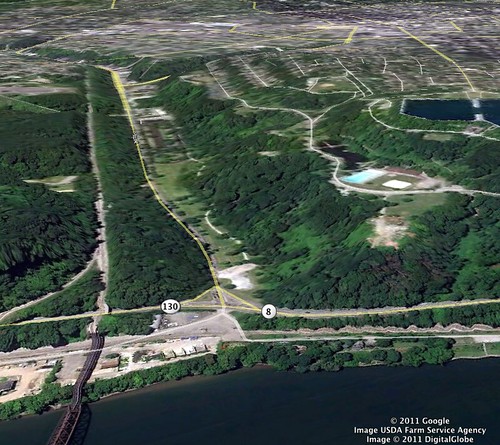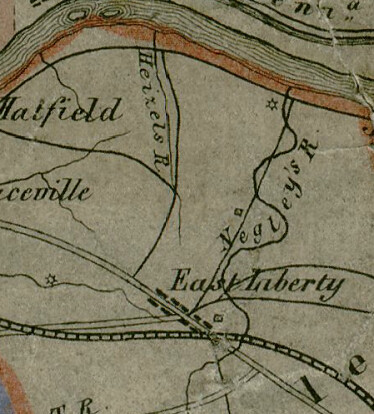A torrential thunderstorm dumped two inches of rain in an hour, on top of already saturated ground. This caused a massive sewage-stormwater overflow that suddenly swamped Washington Boulevard, leading to the tragedy that claimed these four lives, including two small children.
I found this article about lessons learned from the flood. The point that life is precious and tenuous is a well-made point. But why not look beyond that? Why not look at the causes of this disaster and try to keep it from happening again? Warning systems and closures are on the right track, but may not be enough.
A quick glance at Google Earth shows why Washington Street is prone to flooding:

It's in a hollow, just like Panther Hollow, Junction Hollow, and the many other hollows of Pittsburgh. It's been a hollow since before the city was built. And, under the earth and concrete, in a sewer line, is the buried, modified path of what was once called Negley's Run.

(The above image comes from an 1850 map available online from the Darlington Digital Library, an amazing resource.)
When a waterway is put underground, it is out of sight and often out of mind, but it doesn't stop being a waterway. Negley's run has a rather large watershed, one that still captures massive amounts of water during summer downpours. In fact, runoff is faster now than it was before the city was built. Impervious substrates rush water into the drains, where it is funneled through pipes. Furthermore, without being able to easily see what is happening in the pipes, it is difficult to know if there are blockages in the flow, or to see water quickly rising.
Sewage-stormwater overflows happen often in Pittsburgh, but usually 'only' dump sewage into the rivers. During my project I did learn that overflows like this one do sometimes happen in the Junction Hollow neighborhood, where they fill the basements of unfortunate residents with sewer water. Overflows happen into Nine Mile Run at Frick Park as well.
I don't know if rain gardens, impervious substrates, additional trees, rain barrels, and daylighted streams could have stopped this flood. I do know that these measures have been proven to SLOW the movement of floodwaters (after all, that is what inspired the title of this blog). Water rose FAST during this flood - acting more like a flash flood in the Desert Southwest than a flood typical of Pennsylvania. If we could have slowed this flood down just a few minutes, it might have been enough to prevent these tragic deaths.
Watershed health isn't 'just' an environmental issue. Floods kill people each year, and ruin the homes and businesses of many more. As weather appears to be becoming more extreme, perhaps due to climate change, and as we degrade watersheds more and more, tragedies like this are going to become more and more common if we don't act to offset the damage. No single person's sewer-connected drainspout can be blamed for this tragedy, but if each drainspout in the watershed was disconnected, maybe these deaths could have been avoided.

nice..
ReplyDelete